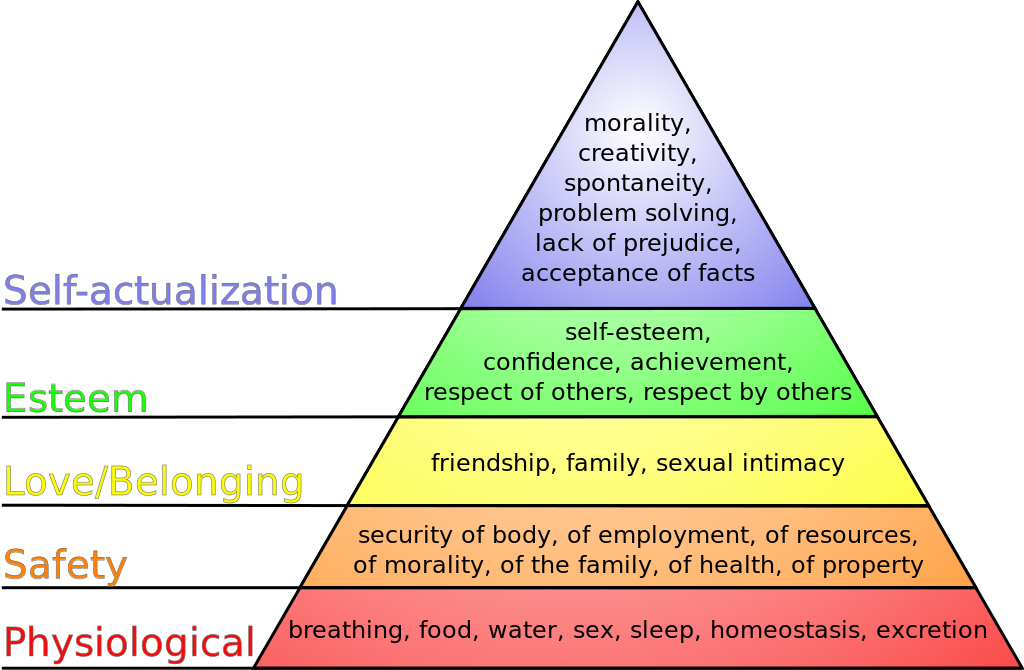“We need much less than we think we need” - Strange, isn’t it?
But if we go through Maslow’s hierarchy of needs then it sounds to be true. Well to start with, let’s first see what this theory says. This theory was given by Abraham Maslow in the 1940s and 1950s (Acquah et al., 2021)1. He proposed a hierarchy of needs which comprises of five levels and these particular needs should be fulfilled in a specific order.
First four are often said to be deficiency needs (D-needs) and the fifth one is usually known as growth or being needs (B-needs). Deficiency needs include physiological needs (food, water, shelter, cloths, sleep), then comes safety and security needs (including, health, employment, safety, etc.), the need following them is love and belonging (such as intimacy, family, friendship and sense of connection), succeeded by self-esteem (include, self-worth, accomplishments and respect). Lastly, there is highest level self-actualization which refers to self-fulfillment or realizing your potential.
According to Maslow, a person first has to satisfy basic needs like physiological needs in order to move upwards and this drives an individual to fulfill his/her unmet needs and acts as the motivation to go upward in the hierarchy. However, Maslow revised the theory of needs several times based on the concept, and finally he came to a conclusion that order of needs might be flexible based on external circumstances or individual differences (McLeod, 2007)2. This theory is considered to be unidirectional, as it progresses from the bottom to top, which has been considered the major limitation of this theory.
We cannot deny the fact that every person has different priorities, different experiences, hence it’s not necessary that everyone has to satisfy the needs of the bottom level to reach higher-level. We can take a few examples such as, Mahatma Gandhi, Mother Teresa, Albert Einstein, these are some influential people who have made their contribution in the world without focusing on self and achieved a state of actualization without having gone through each level of pyramid (Passer & Smith, 2004)3.
And if we navigate through the present era’s complexities then we can notice that people have more needs due to technological advancements. Considering the modern era it’s completely safe to say that technology has taken over the world. It has become an inevitable part of everyone’s life, I can’t even think of one person who’s unaffected by the influence of technology. People find it difficult to live without their smartphones, internet, computers, social media, etc. These are just some of the examples of the technologies that have been rooted in our lives.
Given these changes it becomes important to incorporate a new level that is “technology”, as we can love it or hate it but the fact remains that technology plays a crucial part in our lives. Therefore, adding this new level in my opinion would make a better and more comprehensive version of Maslow’s hierarchy.
Acquah, A., Nsiah, T. K., Antie, E. N. A., & Otoo, B. (2021). Literature review on theories of motivation. EPRA International Journal of Economic and Business Review, 9(5), 25-29. ↩︎
McLeod, S. (2007). Maslow’s hierarchy of needs. Simply psychology, 1(1-18). ↩︎
Passer, M. W., & Smith, R. E. (2004). Psychology: The science of mind and behavior. McGraw-Hill. ↩︎
